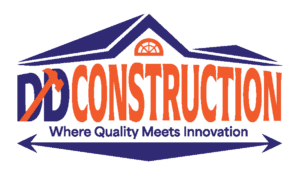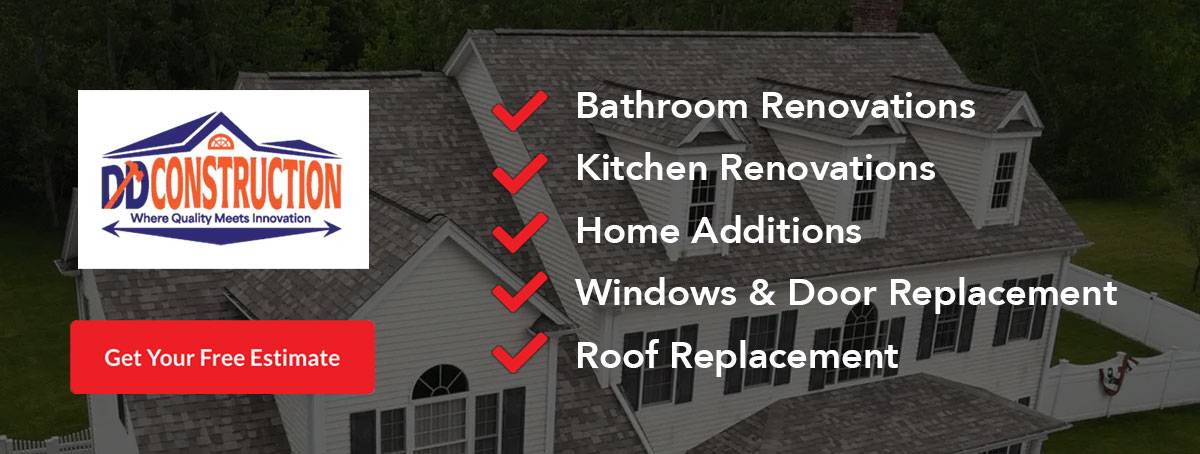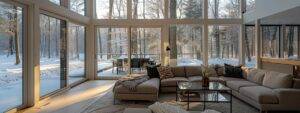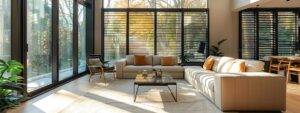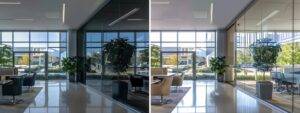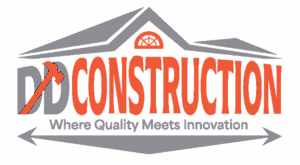Green Roofing Solutions by Modern Roof Contractors in Massachusetts: Expert Installation, Benefits, and Local Services
Green roofing solutions are transforming the aesthetics and functionality of modern buildings across Massachusetts. As energy costs rise and sustainability becomes a focal point in construction, homeowners and commercial property owners are increasingly turning toward eco-friendly roofing options. dd construction’s team of expert Massachusetts roofers provides comprehensive green roofing solutions that combine advanced installation techniques, durable materials, and environmentally focused designs. By integrating living vegetation with modern roofing materials, these solutions not only enhance the curb appeal but also offer tangible benefits such as improved energy efficiency, reduced stormwater runoff, and extended roof lifespan.
The evolution of green roofing has been driven by environmental concerns and the need for durable, cost-effective systems. With buildings accounting for a significant majority of energy consumption, modern roof contractors are emphasizing the importance of roofing solutions that reduce energy loads while promoting sustainability. Green roofs act as natural insulators, lowering heat transfer and thereby reducing cooling costs in the summer and heating expenses in the winter. In Massachusetts, where weather conditions can fluctuate dramatically and strict building codes apply, these roofing solutions meet both regulatory demands and lifestyle aspirations.
This article thoroughly explores what green roofing solutions are, their environmental and energy efficiency benefits, and how they contribute to cost savings and long-term structural integrity. It also details the types of green roofs available, the step-by-step installation process employed by modern roof contractors, maintenance and repair services, and the associated costs and financial incentives. Ultimately, you will learn why DD Construction stands out as a top choice for quality, eco-friendly roofing services in Massachusetts, from Boston to Worcester and beyond.
The following sections break down these topics in detail to provide a comprehensive guide for property owners interested in sustainable roofing alternatives. Each section is structured with rigor, including specific examples, data points, and real-world success stories from across Massachusetts, ensuring that readers receive detailed and actionable insights into green roofing.
What Are Green Roofing Solutions and Their Benefits in Massachusetts?
Green roofing solutions in Massachusetts refer to roofing systems that incorporate living vegetation along with layered waterproof membranes to create an eco-friendly roof. These roofs are designed to improve energy efficiency, reduce urban heat island effects, manage stormwater runoff, and provide additional insulation.
What Is a Green Roof and How Does It Work?
Green roofs consist of a waterproofing membrane, a root barrier, a drainage system, a growing medium, and the vegetation itself. In Massachusetts, these systems are engineered to withstand harsh winter conditions and seasonal temperature variations. When installed, the layers work together to create a microclimate that naturally cools the building in the summer by absorbing solar heat and insulates in the winter by preserving warmth. The living layer, comprised of specially adapted plants, helps purify the air, reduces noise pollution, and contributes to biodiversity in urban areas. The active process of evapotranspiration further moderates temperatures and supports energy conservation gains.
The operational principle of green roofs revolves around harnessing nature to mediate building energy performance while enhancing environmental aesthetics. For instance, in an urban Massachusetts setting, a green roof can lower ambient temperatures by up to 5°F compared to conventional roofs. With its sustainable and multi-functional approach, a green roof also extends the lifespan of the underlying roof materials by protecting them from UV radiation and extreme weather exposure.
What Are the Environmental and Energy Efficiency Benefits of Green Roofs?
Green roofs provide a host of environmental benefits that align with Massachusetts’ stringent energy standards and ecological commitments. They significantly reduce energy consumption by providing natural insulation. Studies indicate that buildings with green roofs can save up to 25% on cooling costs in the summer and contribute to lower heating costs in colder months.
Additionally, the vegetation layer mitigates urban heat island effect by absorbing and dissipating heat, leading to cooler urban environments overall. Beyond energy conservation, green roofs improve air quality and reduce carbon dioxide levels through natural photosynthesis, which is crucial for urban centers like Boston. The system also serves as an effective stormwater management solution by capturing and slowly releasing rainwater, thereby alleviating stress on municipal drainage systems during heavy rainfall.
How Do Green Roofs Contribute to Cost Savings and Longevity?
The cost benefits of green roofs extend beyond immediate energy savings. By acting as a protective layer, they reduce the degradation of roofing materials caused by UV exposure and temperature fluctuations, thereby extending the roof’s lifespan by up to 50%. Maintenance costs are optimized over time with preventive upkeep naturally integrated into the system. Moreover, the increased insulation reduces energy bills, which, according to several case studies from Massachusetts commercial properties, can result in annual savings that offset installation costs within several years. Tax incentives and state rebates further sweeten the deal for property owners investing in green roofing.
Which Types of Green Roofs Are Offered by Modern Roof Contractors?
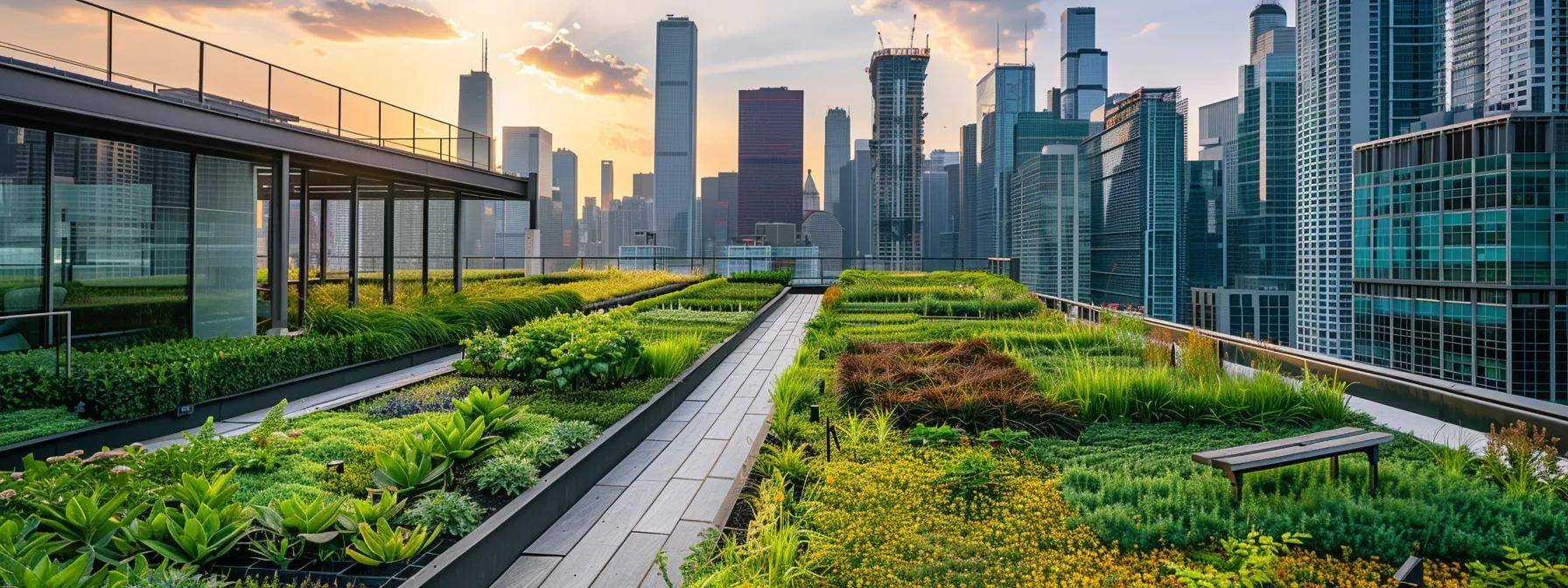
Modern roof contractors in Massachusetts offer a range of green roofing solutions tailored to diverse client needs—from residential properties to large commercial buildings. These include living roofs, vegetative roofs, and solar integrated roofing systems. Each type is designed with specific characteristics that address both environmental efficiency and long-term functional performance.
What Is a Living Roof and What Are Its Key Features?
A living roof, often synonymous with an intensive green roof, is characterized by a deep soil substrate that supports a wider variety of plants, including shrubs and small trees. This type of roof requires a robust structural design but delivers a lush, garden-like environment that enhances biodiversity and provides outstanding thermal insulation. Living roofs are ideal for areas with adequate structural support and when aesthetic appeal is a priority.
Key features include a thick growing medium that allows for diverse planting, efficient stormwater management through high water retention capacities, and the ability to support wildlife. The robust design also ensures that even with heavy vegetation, the system remains durable and effective in the harsh Massachusetts climate. These roofs tend to be more expensive initially but offer greater ecological benefits and life extension for the roof itself.
How Do Vegetative Roofs Differ and What Materials Are Used?
Vegetative roofs, also known as extensive green roofs, use a shallow layer of growing medium with low-maintenance, drought-resistant plant species. Unlike living roofs, which allow for a wider range of vegetation, vegetative roofs are generally lighter, require less maintenance, and are ideal for retrofit applications on existing structures.
The materials used in vegetative roofs include a waterproofing membrane, root barrier, drainage layer, and a minimally deep substrate. The selected plants are usually sedums and grasses adapted to extreme temperatures and limited soil depth. The ease of maintenance and lower structural load make vegetative roofs highly popular in urban commercial settings where cost efficiency and minimal upkeep are prioritized.
What Are Solar Integrated Roofing Systems and Their Advantages?
Solar integrated roofing systems combine green roofing with photovoltaic technology to harness renewable energy. These systems merge solar panels seamlessly with vegetation, reducing the visual impact while producing clean energy. The integration minimizes the need for separate structural components by optimizing roof space to serve dual functions—energy generation and environmental regulation.
The advantages are multi-faceted. They reduce overall energy dependence on fossil fuels, provide shade and cooling benefits to the roof system, and enhance the aesthetic appeal of the building. Moreover, studies have shown that solar panels on green roofs operate more efficiently due to the cooling effect provided by the vegetative layer. This dual utility approach makes green roofing systems even more attractive to environmentally conscious property owners, yielding both ecological benefits and long-term financial savings through energy production and reduced operational costs.
How Does Modern Roof Contractors Handle Green Roof Installation in Massachusetts?
The installation of green roofing systems in Massachusetts requires expertise, precision, and adherence to local building codes. Modern roof contractors ensure that every installation is tailored to the unique requirements of each roof structure while delivering sustainable performance across varying climates. The process integrates detailed planning, structural assessment, and meticulous installation procedures to guarantee longevity, durability, and aesthetic appeal.
What Is the Step-by-Step Process for Installing Living and Vegetative Roofs?
The installation process for both living and vegetative roofs starts with a comprehensive roof inspection to assess structural integrity and load capacity, ensuring that the existing infrastructure can support the extra weight of the green roof system. Following inspection, the contractor applies a waterproofing membrane and root barrier, which are critical in protecting the building from moisture and root penetration. Next, a drainage layer is installed to facilitate efficient water runoff and prevent waterlogging.
Once these foundational layers are in place, the growing medium is spread evenly over the roof, creating the substrate on which the selected vegetation can be planted. For living roofs, this substrate is deeper, allowing more mature plantings, while vegetative roofs receive a thinner layer designed for low-maintenance, hardy species. Finally, the planting phase occurs, where vegetation is carefully selected and installed to ensure resilience in Massachusetts’ variable climate. This precise sequence of steps ensures that the green roof functions optimally from both an environmental and structural standpoint.
How Is Solar Integrated Roofing Installed and Integrated With Existing Roofs?
For solar integrated roofing, the process begins with a structural evaluation to determine the load capacity and compatibility of solar panel integration. Contractors then install a specially designed mounting system that allows solar panels to be embedded within the green roof system without disrupting the integrity of the vegetation layer. The waterproofing and drainage layers work harmoniously with the solar panels to ensure that both systems operate at maximum efficiency.
After installing the mounting system, solar panels are positioned and secured, ensuring optimal exposure to sunlight while maintaining the roof’s green aesthetic. Following the integration of mechanical and electrical connections, the growing medium and vegetation are applied around the panels, creating a cohesive appearance. This hybrid system leverages the benefits of renewable energy production alongside the natural insulative and environmental benefits of a green roof, offering clients enhanced sustainability and long-term cost savings.
How Does Local Massachusetts Climate and Building Codes Affect Installation?
Massachusetts’ climate is characterized by cold winters, hot summers, and significant precipitation variability, which necessitates robust insulation and drainage systems in green roofing installations. Local building codes require stringent adherence to safety, durability, and energy efficiency standards. Contractors must ensure that the installation methods, materials, and structural reinforcements comply with these regulations. For instance, reinforced waterproof membranes and frost-resistant materials are essential to counter the effects of snow and freezing temperatures, while efficient drainage solutions are critical during heavy rains. Such considerations ensure that green roofing solutions not only perform well under optimal conditions but also maintain structural integrity and energy efficiency through Massachusetts’ diverse seasonal challenges.
What Maintenance and Repair Services Are Available for Green Roofs?
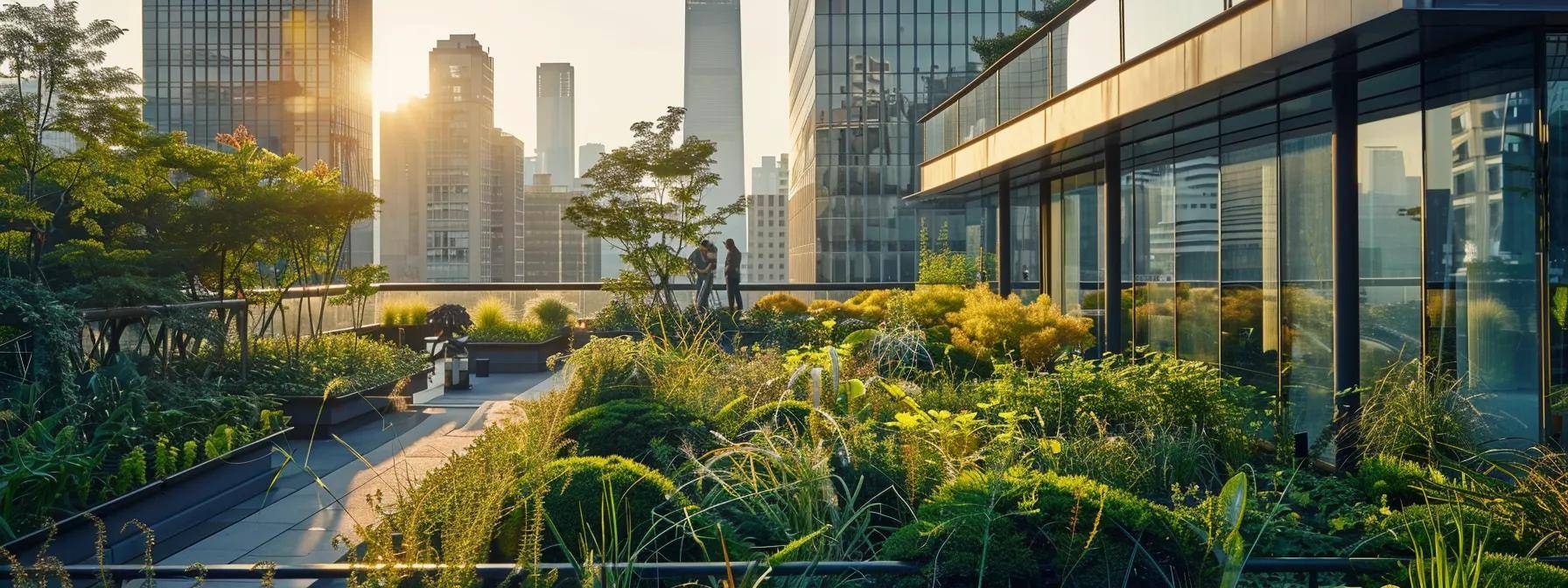
Proper maintenance is crucial to extending the lifespan and efficiency of green roofs. Regular care ensures that both the vegetation and the underlying structure remain healthy, resilient, and effective over time. Modern roof contractors offer comprehensive maintenance and repair services that include scheduled inspections, seasonal upkeep, and prompt repairs for any damage or degradation of the green roofing system.
How Should Living and Vegetative Roofs Be Maintained for Longevity?
Living and vegetative roofs require tailored maintenance protocols. Scheduled inspections are essential to detect issues with waterproofing membranes, drainage layers, and plant health. For living roofs, regular pruning, replanting, and fertilizing help maintain plant density and vitality, ensuring that the deeper substrates continue to support the diverse vegetation. In contrast, vegetative roofs benefit from simpler upkeep routines such as weed control and occasional watering during drought conditions. Contractors often recommend maintenance intervals of twice a year, with additional checks after severe weather events. This preventative approach minimizes the risk of leaks, root intrusion, and structural damage.
To assist property owners, maintenance packages typically include services like debris removal, checking for water pooling, and ensuring the integrity of all roofing layers. Advanced monitoring systems may also be installed to provide real-time data on humidity, temperature, and roof surface conditions, helping to preempt issues before they escalate. By integrating such proactive maintenance strategies, Massachusetts property owners can ensure that their green roofing investments continue to provide environmental and cost-saving benefits over the long term.
What Repair Services Does Modern Roof Contractors Provide for Green Roofs?
Repair services for green roofs are handled meticulously by experienced roof contractors who understand the unique challenges of these systems. Repairs may include patching the waterproofing membrane, reseeding or replacing damaged vegetation, and fixing drainage issues. Contractors use specialized materials that match the original installation components to ensure seamless integration and maintain the integrity of the green roof. For example, in cases of water leakage or membrane damage due to freeze-thaw cycles, a targeted repair approach is used to address only the affected area, minimizing downtime and potential disruption to the roof’s ecosystem.
In addition, contractors conduct thorough evaluations after extreme weather events to assess any structural or vegetative damage. They then provide detailed repair reports and recommendations, ensuring that any interventions preserve the roof’s environmental benefits. Routine maintenance checks and prompt repair services work together to extend the roof’s lifespan significantly while ensuring optimal performance and durability.
How Often Is Maintenance Recommended for Different Green Roof Types?
Maintenance frequency for green roofs varies based on system type and environmental factors. For intensive living roofs, which have deeper substrates and more diverse vegetation, biannual maintenance is the norm, with extra care needed following dramatic seasonal changes. Extensive vegetative roofs, which are lower in maintenance requirements, typically require inspections at least once or twice a year. However, the recommendation is to perform visual inspections quarterly to detect minor issues early, such as weed growth or slight pooling of water. This proactive strategy, combined with scheduled professional maintenance, ensures that green roofs continue to operate efficiently, reflecting both the environmental benefits and the cost-saving potential expected by property owners in Massachusetts.
What Are the Costs and Financial Incentives for Green Roofing in Massachusetts?
Investing in green roofing solutions can involve variable costs depending on factors like the type of roof, building size, and specific installation requirements. However, Massachusetts property owners benefit from various financial incentives that make green roofing a compelling long-term investment. The installation costs are often offset by energy savings, extended roof lifespan, and available tax rebates or grants dedicated to sustainable building practices.
How Much Does Green Roof Installation Typically Cost in Massachusetts?
Green roof installation costs in Massachusetts vary widely by project complexity, ranging from $15 to $30 per square foot for extensive vegetative systems and as high as $30 to $50 per square foot for intensive living roofs. These costs include materials, labor, and ancillary services such as structural reinforcements and system integrations for drainage and waterproofing. While the upfront expenses may be higher than traditional roofing solutions, the long-term savings on energy bills, increased property values, and lower maintenance costs often justify the investment. Over a period of 15 to 20 years, energy savings alone can typically offset the initial installation expenses, making green roofing a highly economical option in the long run.
What Tax Incentives and Rebates Are Available for Green Roofing Projects?
Massachusetts offers several financial incentives for building owners who choose sustainable roofing solutions. These include state and local tax rebates, energy efficiency grants, and low-interest financing options designed to promote renewable energy and green building practices. For example, property owners may qualify for tax credits that cover a significant percentage of the installation cost, while programs run by state agencies provide direct rebates and financial incentives to offset environmental upgrades. These incentives are periodically updated in response to evolving green building standards and sustainability goals, making it prudent for property owners to consult with certified green roofing specialists and local authorities to ensure they receive the full benefit of available programs.
How Do Energy Savings Offset Green Roof Costs Over Time?
Energy savings are among the most significant benefits of green roofs. The vegetative layer acts as a natural insulator, reducing the need for artificial cooling during summer and heating during winter. In Massachusetts, studies have shown that green roofs can reduce energy consumption by up to 25%, translating into substantial annual savings on utility bills. Over time, these savings accumulate and can offset the initial installation costs. In addition to energy conservation, green roofs contribute to improved indoor air quality and reduce external cooling loads, further enhancing overall cost efficiency. When combined with available tax incentives and reduced maintenance costs, green roofing offers a financially attractive solution that aligns with both ecological and economic objectives.
Why Choose Modern Roof Contractors for Green Roofing Solutions in Massachusetts?
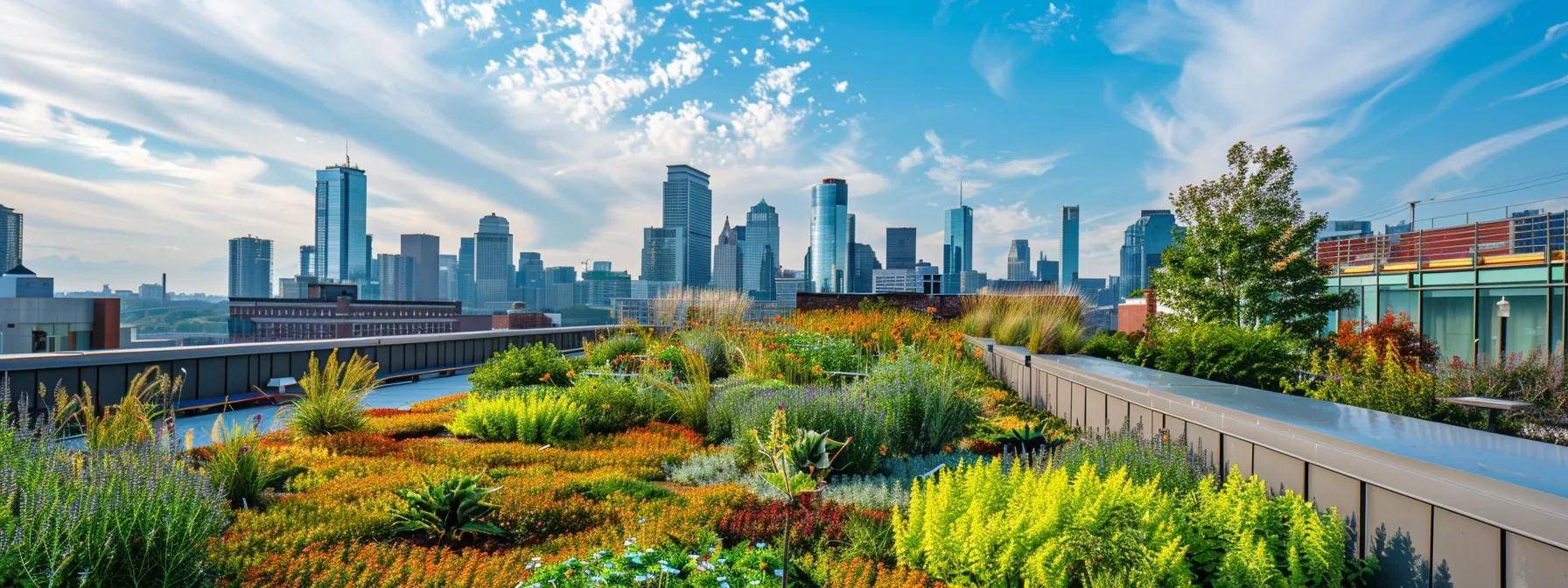
Modern Roof Contractors stand out in Massachusetts for their expertise in installing and maintaining state-of-the-art green roofing systems. With a strong reputation for quality workmanship and eco-friendly practices, these contractors deliver tailored solutions that address the unique challenges of the region’s climate while meeting stringent building codes. DD Construction, in particular, emphasizes sustainable practices, exceptional service, and long-lasting roofing solutions.
What Certifications and Expertise Do Modern Roof Contractors Have?
Modern roof contractors in Massachusetts hold a range of certifications that validate their technical proficiency and commitment to sustainable building practices. These certifications include GAF Master Elite status, ENERGY STAR qualifications, and LEED accreditation. Such credentials attest to the contractor’s ability to deliver high-quality workmanship and adhere to the highest industry standards. Furthermore, contractors undergo continuous training to stay updated on the latest roofing advancements and regulatory developments. Their expertise spans from traditional roofing methods to the installation of advanced green roofing systems designed to function optimally in the challenging Massachusetts climate.
How Does Modern Roof Contractors Ensure Sustainable and Eco-Friendly Practices?
Sustainable practices are integrated into every phase of the roofing process by modern roof contractors. From design to installation, eco-friendly materials are prioritized to minimize environmental impact. Contractors use recycled and locally sourced materials wherever possible, reducing the carbon footprint of each project. Additionally, the installation methods emphasize energy conservation, water management, and durability, ensuring that the green roof performs efficiently over its lifespan. Advanced project management techniques and rigorous quality assurance protocols ensure that every installation meets both client expectations and environmental standards. This holistic approach to sustainability not only benefits the environment but also translates into long-term cost savings and improved property performance.
What Are Customer Success Stories and Case Studies in Massachusetts?
Numerous customer success stories highlight the positive impact of green roofing solutions installed by modern roof contractors. For example, a large commercial complex in Boston achieved a 20% reduction in overall energy costs after integrating a vegetative roof system. Residential properties across Worcester have experienced extended roof lifespans and improved aesthetic appeal, leading to increased property values. Case studies reveal that installations combining solar integrated systems with green roofs not only generate renewable energy but also reduce maintenance expenses significantly. Testimonials from satisfied clients consistently point to the enhanced durability, environmental benefits, and superior aesthetic results provided by these roofing solutions, making them an ideal choice for both commercial and residential properties in Massachusetts.
Where Are Green Roofing Services Available Across Massachusetts?
Modern Roof Contractors offer green roofing services across the entire state of Massachusetts, ensuring that clients from urban centers to suburban and rural areas can benefit from eco-friendly roofing solutions. Whether you are located in Boston, Worcester, or a smaller town, the expertise and resources of these contractors are widely available to address diverse project requirements. The company has developed a strong presence in key regions by leveraging local expertise, complying with regional building codes, and adapting installation techniques to suit the unique climate challenges specific to different areas.
What Green Roofing Solutions Are Offered in Boston?
In Boston, green roofing solutions predominantly focus on energy efficiency, stormwater management, and urban aesthetics. The solutions offered include extensive vegetative roofs that complement the city’s historic architecture while providing modern energy-saving benefits. With a high concentration of commercial and mixed-use buildings, contractors in Boston integrate solar panels with vegetative roofing systems to maximize both renewable energy generation and improved insulation. These installations not only help reduce the urban heat island effect but also serve to enhance the property value and appeal of commercial structures in the city center. Clients in Boston benefit from tailored maintenance schedules, prompt repair services, and expertise in navigating local planning and building regulations.
How Does Green Roofing Differ in Worcester and Springfield?
In Worcester and Springfield, green roofing services are adapted to suit both older building stock and modern developments. Contractors in these areas emphasize the durability and long-term cost savings offered by green roofs, with many projects focusing on retrofitting existing structures to improve energy efficiency and manage stormwater effectively. The projects often accommodate a blend of living roofs and vegetative solutions, with careful consideration given to structural reinforcements required for older buildings. In addition, cities like Worcester and Springfield may opt for lighter vegetative systems that require minimal upkeep, making them both budget-friendly and sustainable. Local case studies demonstrate improved indoor climate control, reduced maintenance costs, and increased property longevity, reinforcing the viability of green roofing across these diverse environments.
Are There Services for Other Massachusetts Cities and Towns?
Green roofing solutions are not limited to major metropolitan areas; modern roof contractors extend their services to other cities and towns throughout Massachusetts. Communities in smaller municipalities benefit from customized green roofing systems that address local climate challenges while providing energy efficiency and aesthetic improvements. Whether the project involves a residential complex in suburban communities or a commercial installation in emerging urban centers, the same rigorous standards of quality and sustainability apply. Contractors work closely with local authorities to ensure compliance with regional codes and tailor solutions to individual site conditions. This widespread availability enables property owners across Massachusetts to access high-quality, eco-friendly roofing solutions backed by extensive expertise and long-term service commitments.
Detailed Lists
Below is a detailed list of seven popular green roofing systems available in Massachusetts along with their key benefits and installation characteristics:
- Living Roofs – Lush, Biodiverse, and High-Load Capable Living roofs provide a garden-like environment on your building’s rooftop. They feature deep substrates allowing for a wide range of plant species, robust water retention, and outstanding thermal insulation properties. Ideal for large residential and commercial structures, they enhance urban biodiversity, manage stormwater effectively, and deliver significant energy savings. The integrated layers protect against UV radiation and prolong the lifespan of the roof structure.
- Vegetative Roofs – Low-Maintenance, Lightweight, and Cost Effective Vegetative roofs use a thin layer of soil and drought-resistant plants, such as sedums and grasses, making them particularly suitable for retrofit installations. Their lightweight nature minimizes structural strain, while the minimal substrate layer reduces total maintenance requirements. These roofs are favored by urban property owners who require sustainable, energy-saving solutions with lower initial installation costs yet still provide superb insulation performance and stormwater management.
- Solar Integrated Roofing Systems – Dual-Function and Energy Generating Integrating photovoltaic panels with green roofing, solar integrated systems maximize roof functionality by generating renewable energy while providing natural insulation. This hybrid approach reduces overall energy consumption and lowers operational costs, as the vegetation layer helps maintain an optimal operating temperature for solar panels. The design improves both aesthetic appeal and sustainability, making it an attractive option for eco-conscious commercial projects.
- Cool Roofs with Green Overlays – Enhanced Reflectivity and Thermal Management These systems combine a traditional cool roof technology with a green overlay to further reduce heat absorption. The reflective base roof minimizes thermal buildup, while the added vegetation layer provides additional insulation and environmental benefits. This dual approach significantly reduces energy costs in warmer months and contributes to a more sustainable urban environment by mitigating the urban heat island effect.
- Modular Green Roof Systems – Pre-Engineered, Flexible, and Rapid Deployment Modular systems come in pre-manufactured trays or panels that can be installed quickly and efficiently. Offering both vegetative and living roof options, these systems are ideal for projects requiring rapid deployment without compromising sustainability or aesthetic appeal. The system is designed for ease of installation and maintenance, making it an efficient solution for large-scale and retrofit projects alike.
- Extensive Green Roofs – Energy Efficient and Affordable Solutions Extensive green roofs consist of a shallow growing medium and low-maintenance plant species. They are energy efficient and considerably more affordable than intensive living roofs. The primary benefits include reduced cooling and heating costs, minimal weight, and low maintenance requirements. They are particularly suited to flat roofs of commercial buildings and residential complexes where weight restrictions and cost are major considerations.
- Rooftop Gardens – Community-Focused, Aesthetic, and Multifunctional Rooftop gardens transform unused roof spaces into vibrant green areas that serve multiple purposes, including community engagement, local food production, and recreational spaces. They enhance urban aesthetics and provide a natural habitat for local flora and fauna while generating energy savings through improved roof insulation. This multifunctional approach not only delivers environmental benefits but also creates value for property owners by improving the overall appearance and usability of the building.
Comprehensive Tables
Below are three tables summarizing key comparisons, cost structures, and benefits of various green roofing systems available in Massachusetts.
Table 1: Comparison of Green Roofing Types
Below is a table comparing different green roofing types based on substrate depth, maintenance requirements, energy efficiency, load capacity, and installation cost.
| Roofing Type | Substrate Depth | Maintenance | Energy Efficiency | Load Capacity | Installation Cost (per sq ft) |
|---|---|---|---|---|---|
| Living Roofs | Deep (6-12 inches) | High | High | High (supports shrubs) | $30-$50 |
| Vegetative Roofs | Shallow (2-4 inches) | Low | Moderate | Moderate (sedum-based) | $15-$30 |
| Solar Integrated Roofing | Variable | Moderate | Very High | Dependent on design | $35-$55 |
| Cool Roofs with Green Overlays | Moderate (4-6 inches) | Moderate | High | Moderate | $25-$40 |
| Modular Green Roof Systems | Pre-engineered | Low | Moderate | Moderate to High | $20-$35 |
| Extensive Green Roofs | Very Shallow | Very Low | Moderate | Low | $15-$25 |
| Rooftop Gardens | Variable | High | High | High | $30-$50 |
This table provides a clear comparison to help property owners choose a green roofing system that suits their structural needs and budget while maximizing energy efficiency.
Table 2: Cost-Benefit Analysis of Green Roofing
This table outlines the estimated installation costs, annual energy savings, maintenance frequency, and long-term benefits for different green roofing types.
| Roofing Type | Estimated Cost (per sq ft) | Annual Energy Savings (%) | Maintenance Frequency | Long-Term Benefits |
|---|---|---|---|---|
| Living Roofs | $30-$50 | 25 | Biannual | Extended roof lifespan, biodiversity boost |
| Vegetative Roofs | $15-$30 | 20 | Annual | Lower initial cost, moderate insulation |
| Solar Integrated Roofing | $35-$55 | Annual | Renewable energy generation, dual benefits | |
| Cool Roofs with Green Overlays | $25-$40 | 22 | Annual | Reduced cooling load, urban heat reduction |
| Modular Green Roof Systems | $20-$35 | 18 | Annual | Quick deployment, flexible design |
| Extensive Green Roofs | $15-$25 | 20 | Annual | Cost-effective, minimal maintenance |
| Rooftop Gardens | $30-$50 | 25 | Biannual | Community engagement, recreational space |
| Incentive Type | Amount/Percentage | Eligibility Criteria | Benefit Description | Duration |
|---|---|---|---|---|
| State Tax Credit | Up to 20% of installation cost | Residential and commercial projects | Reduces upfront cost | Varies annually |
| Energy Efficiency Grant | Up to $10,000 | Eligible for energy-saving improvements | Lowers effective installation cost | 1-3 years |
| Local Rebate Program | Up to 15% of project cost | Projects in designated urban areas | Encourages sustainable building practices | Varies by city |
| Federal Tax Incentives | Varies (e.g., 10%-30%) | Renewable energy integrations | Supports solar integrated systems | Multi-year |
| Low-Interest Financing | 0%-5% APR | Qualifying green buildings | Reduces financial burden during installation | 5-10 years |
| Utility Company Rebates | Varies | Energy efficiency improvements | Rewards reduced energy consumption | Ongoing |
| Green Building Certification Incentives | Varies (up to $5,000) | LEED or ENERGY STAR certified projects | Enhances property value and marketability | Project lifespan |
This cost-benefit analysis demonstrates how green roofing not only supports environmental sustainability but also offers significant financial returns through energy savings and reduced maintenance expenses.
Table 3: Financial Incentives for Green Roofing in Massachusetts
This table highlights available tax credits, rebates, and grants for green roofing projects in Massachusetts, providing property owners with potential financial relief upon installation.
This table summarizes critical financial incentives available to property owners in Massachusetts, showcasing how the long-term benefits of green roofing can far outweigh the initial costs through various rebates and tax incentives.
Frequently Asked Questions
Q: What are the primary environmental benefits of installing a green roof in Massachusetts? A: Green roofs provide numerous environmental benefits including improved energy efficiency, reduced urban heat island effect, and enhanced stormwater management. They help insulate buildings by naturally cooling during summer and retaining heat in winter, lower energy bills through reduced reliance on HVAC systems, and improve urban air quality. In regions like Massachusetts with variable seasonal weather, these benefits translate to significant reductions in energy consumption and maintenance costs, while also promoting local biodiversity.
Q: How does the installation process of a green roof differ from traditional roofing methods? A: The green roof installation process is more complex than traditional roofing due to additional layers such as waterproofing membranes, root barriers, drainage systems, and growing mediums. Contractors must also consider structural integrity to support the extra weight. In contrast, traditional roofing typically only involves the installation of membranes and shingles. Green roof installations require detailed planning and precise layering to ensure durability, proper drainage, and effective support for vegetation, especially in Massachusetts’ challenging climate.
Q: What kind of maintenance do green roofs typically require? A: Green roofs require regular maintenance to ensure longevity and optimal performance. For living roofs, biannual maintenance including pruning, irrigation, and occasional replanting is common, whereas vegetative roofs may only require annual checks such as debris removal, weed control, and irrigation during drought periods. Scheduled inspections help identify issues early, allowing contractors to perform necessary repairs and maintain the roof’s insulation and water management functions, ensuring long-term cost benefits and environmental efficiency.
Q: Are there specific financial incentives available for green roofing projects in Massachusetts? A: Yes, Massachusetts offers a range of financial incentives for green roofing projects. Property owners can take advantage of state tax credits, local rebates, federal incentives, and low-interest financing options that can substantially reduce the overall installation costs. These incentives are intended to promote sustainable building practices and offset the higher upfront costs of green roofing systems. Contractors often assist property owners in navigating these programs, ensuring that buyers receive maximum financial benefits through rebates and tax deductions.
Q: How do solar integrated roofing systems work and what advantages do they offer over traditional solar panel installations? A: Solar integrated roofing systems combine photovoltaic panels with green roofing elements to provide dual benefits. The integration allows the vegetative layer to cool the solar panels, thereby improving their efficiency, while the solar panels add energy-generating functionality to the roof. This symbiotic relationship reduces energy costs, enhances insulation, and maintains aesthetic continuity. Compared to traditional solar installations that are mounted separately, these integrated systems maximize space usage and improve overall building performance in the variable Massachusetts climate.
Q: Can green roofing solutions be installed on all types of buildings in Massachusetts? A: Green roofing solutions can be adapted to a wide range of buildings, including residential homes, commercial complexes, and public buildings. However, the feasibility depends on structural capacity, roof orientation, and existing building conditions. Modern roof contractors conduct thorough inspections to determine if a building can support the additional weight and specific maintenance requirements of a green roof. Custom-designed solutions ensure that green roofing can be safely implemented while meeting all local building codes and environmental standards.
Q: What are the long-term cost benefits of green roofs compared to traditional roofing? A: Although green roofs have a higher upfront installation cost, they provide long-term benefits by significantly reducing energy expenses, extending the lifespan of roof membranes, and lowering maintenance costs. The natural insulation offered by the vegetation reduces HVAC operation, leading to lower utility bills. Additionally, the protective layers shield the building from UV degradation, thus extending the roof’s longevity. Over time, these energy savings and reduced repair expenditures can fully offset the initial investment, making green roofs an economically practical solution in Massachusetts.
